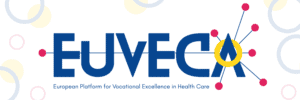Saxion University of Applied Sciences is one of the largest institutions of higher education in the Netherlands, with close to 27,000 students. This merger enabled Saxion to build further on its strong position in Dutch higher education and since then Saxion University has come to be recognised as an important centre of expertise at a regional, national and international level. Saxion offers a broad range of courses at various levels, including many international programmes. Research is an important component of our education. Through teaching and research, we put the latest scientific advances into practice. Research at Saxion is driven by demands from businesses, local authorities and organisations. Our main focus is the field of Living Technology. We aim to strengthen the international component of our applied research by carrying out projects with international partners, which also benefit the regional economy and society. Saxion collaborates in various ways with companies and (governmental) institutions in our home region.

Saxion University of Applied Science
(Saxion)
Role in the project:
Saxion is workpackage leader of WP5: Testing and Implementation. In this workpackage Regional Vocational Education Hubs in Healthcare (RVEH) will be set up in each region based on the governance model, and regional activities will be coordinated and proposed to health care students and professionals. The Regional Vocational Education Hubs in Healthcare (EPVE) will be a European supplement to the regional activities, proposing inter regional learning and (blended) mobility activities.


